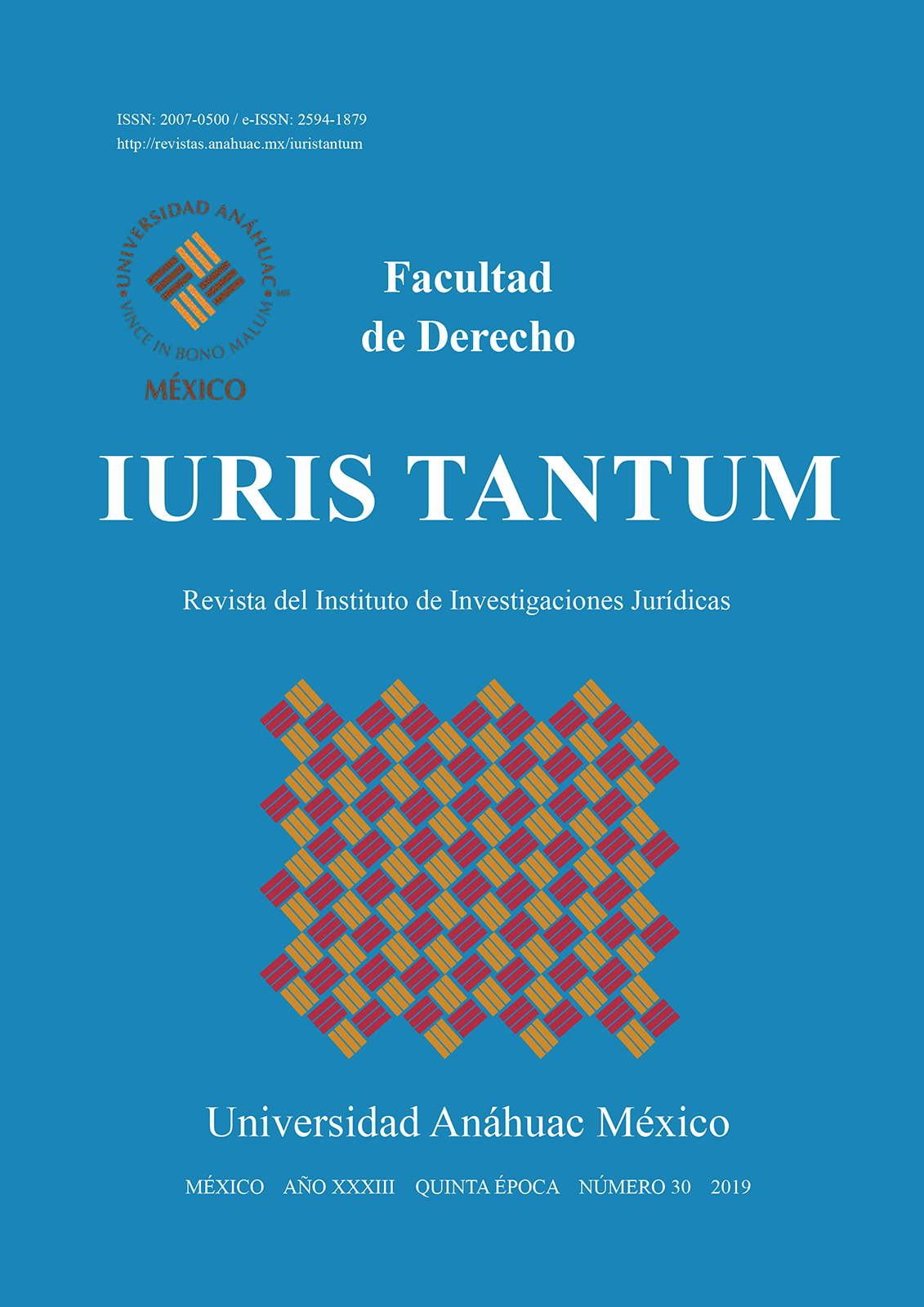COMPETITIVENESS IN LATIN AMERICA: AN ANALYSIS FROM THE PUBLIC POLICY CYCLE
Main Article Content
Abstract
For the present investigation, an analysis of the competitiveness of the five best located countries was carried out in accordance with the Global Innovation Index (IGI) and the Global Competitiveness Index (ICG), with respect to the public policy cycles of these entities. To comply with the above, the objective of this
research is to analyze the situation in Latin America, given the challenge of promoting through policies and new institutional arrangements, based on the public policy cycle proposed by Franco. Based on the results found in the analysis, it was determined that success is at some levels of the Government and serves as a
guide for other Latin American countries to do so to promote and guarantee sustainable development.
Downloads
PLUMX Metrics
Article Details
Iuris Tantum is distributed under international Creative Commons Attribution-NonCommercial-ShareAlike 4.0 International License.
The author keeps the property rights with no restriction whatsoever and guarantees the magazine the right to be the first publication of the work. The author is free to deposit the published version in any other medium, such as an institutional archive or on his own website.
References
2018.
BECKER, Gary, 1995, “Human Capital and Poverty Alleviation,” HRO Working
Papers N° 52. Washington DC: The World Bank.
CAÑAS, Alberto, 2015, Plan Nacional de Desarrollo 2015-2018.
CONAVI, 2016, Informe de Evaluación Anual de metas Institucionales año 2016.
CORNELL UNIVERSITY, INSEAD, and WIPO, 2017, The Global Innovation
Index 2017: Innovation Feeding the World, Ithaca, Fontainebleau, and Geneva.
DEPARTAMENTO NACIONAL DE PLANEACIÓN, 2017, Informe al Congreso
2017, Juan Manuel Santos.
DEPARTAMENTO NACIONAL DE PLANEACIÓN-DNP- Dirección de Seguimiento
y Evaluación de Políticas –DSEPP-, 2016, Informe al Congreso
2016, Juan Manuel Santos.
____, Dirección de Seguimiento y Evaluación de Políticas —DSEPP—, 2015,
Informe al Congreso 2015, Juan Manuel Santos.
____, Dirección de Seguimiento y Evaluación de Políticas —DSEPP—, 2014,
Informe al Congreso 2014, Juan Manuel Santos.
____, Dirección de Seguimiento y Evaluación de Políticas —DSEPP—, 2013,
Informe al Congreso 2013, Juan Manuel Santos.
____, Dirección de Seguimiento y Evaluación de Políticas —DSEPP—, 2012,
Informe al Congreso 2012, Juan Manuel Santos.
DIRECCIÓN ADMINISTRATIVA PRESIDENCIA DE LA REPÚBLICA, 2014,
Balance de Gestión Integral 2014.
____, 2015, Balance de Gestión Integral 2015.
____, 2016, Balance de Gestión Integral 2016.
____, 2017, Balance de Gestión Integral 2017.
ESTAY, Jaime, 1990, La economía mundial y América Latina: tendencias problemas
y desafíos. 14(3). 11-32.
FRANCO, Julio, 2013, Diseño de Políticas Públicas. México. IEXE editorial.
KNOEPFEL, Peter, et al, 2007, Hacia un modelo de análisis de políticas públicas
operativo: Un enfoque basado en los actores, sus recursos y las instituciones.
Ciencia Política (3), 6-29.
MEJÍA, Jiménez, 2012, Modelos de implementación de las políticas púbicas en
Colombia y su impacto en el bienestar social. Analecta polit. 2 (3) 141-64.
MINISTERIO SECRETARÍA GENERAL DE LA PRESIDENCIA, 2012), Informe
de avance de la Agenda de Modernización del Estado del gobierno del
presidente Sebastián Piñera.
____, 2013), Rindiendo cuenta: Balance de tres años de Gobierno del presidente
Sebastián Piñera: Informe de avance de los siete ejes prioritarios del gobierno
de la reconstrucción.
MINISTERIO DE PLANIFICACIÓN NACIONAL Y POLÍTICA ECONÓMICA,
2013, . Informe Anual de Cumplimiento de Metas PND 2013.
MINISTERIO DE PLANIFICACIÓN NACIONAL Y POLÍTICA ECONÓ-
MICA (2015). Informe Anual de Cumplimiento de Metas 2015 PND 2015-
2018.
MORTIMORE, Michael y PERES, Wilson, 2001, La competitividad internacional
de América Latina y el Caribe: las dimensiones empresarial y sectorial,
seminario Camino a la competitividad: el nivel meso y microeconómico,
CEPAL y BID.
OBREGÓN, María, 2014, Plan Nacional de Desarrollo 2011-2014.
OLAVARRÍA, Mauricio, 2007, Conceptos básicos en el análisis de políticas públicas.
INAP (11) 10-15.
PEÑA, Enrique, 2013, 1° Informe de Gobierno 2013-2013.
____, 2013, Plan Nacional de Desarrollo 2013-2018.
____, 2014, 3° Informe de Gobierno 2014-2015.
____, 2015, 4° Informe de Gobierno 2015-2016.
____, 2016, 5° Informe de Gobierno 2016-2017.
____, 2017, 6° Informe de Gobierno 2017-2018.
PIÑERA, Sebastián, 2010, Programa de gobierno para el cambio, el futuro y la
esperanza chile 2010-2014.
ROJAS, Patricia y SEPÚLVEDA, Sergio, 1999, ¿Qué es la competitividad?: competitividad
de la agricultura: cadenas agroalimentarias y el impacto del factor
localización espacial. 2(9).
ROY, Roberto, 2012, Informe Anual 2012-Canal de Panamá.
____, 2013, Informe Anual 2013-Canal de Panamá.
____, 2014, Informe Anual 2014-Canal de Panamá.
____, 2015, Informe Anual 2015-Canal de Panamá.
____, 2016, Informe Anual 2016-Canal de Panamá.
____, 2017, Informe Anual 2017-Canal de Panamá.
SANTOS, Juan, 2010, Bases del plan nacional de desarrollo 2010-2014: prosperidad
para todos, Departamento Nacional de Planeación.
____, 2014, Bases del Plan Nacional de Desarrollo 2014-2018: Todos por un nuevo
país, paz equidad educación.
SECRETARÍA DE HACIENDA Y CRÉDITO PÚBLICO, 2014, 2° Informe de
Ejecución 2014.
STIGLITZ, Joseph, 2003, “El rumbo de las reformas. Hacia una nueva agenda
para América Latina”. Revista de la CEPAL. (80).
SUBIRATS, Joan, 2008, Análisis y gestión de las políticas públicas: capítulo 10.
La evaluación de las políticas públicas y de sus efectos. 208-33.
TAMAYO, Manuel, 1997, “El análisis de las políticas públicas”. En BAÑÓN,
Rafael y CARILLO, Ernesto (Comp.), La Nueva administración pública.
Alianza Universidad Textos. Madrid, España.
VARELA, Juan, 2015, Plan Estratégico de Gobierno: Un solo país 2015-2019.
WEF (2017): The Global Competitiveness Report 2016-2017: Committed to improving
the state.

